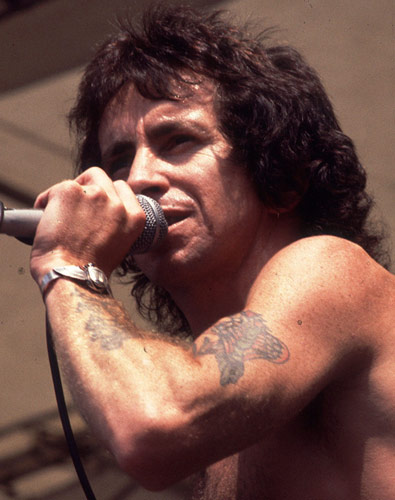Looks like everyone with a blog is posting their theories and speculation about the missing Malaysian Airlines Boeing 777 flight MH370 these past few weeks, so I thought I would add my theory to already massive pile.
This is certainly a sad accident, and that is what I believe it is - an accident. Sorry, no conspiracy theories or other wild speculation here. This is what I think happened.
Cast your mind back a few years to the Qantas QF30 incident, where an oxygen bottle exploded in the hold of the Boeing 747, punching debris up through the floor of the aircraft into the passenger cabin, as well as blowing an enormous hole in the fuselage just forward of the wing root. Thankfully the crew managed to get the aircraft on ground safely and no one was killed in the incident.
On the 747, the oxygen bottles are mounted vertically in the hold, so when this one exploded, it punched downwards and out of the aircraft.. On the 777, the crew oxygen bottle in the forward compartment is mounted horizontally. If that oxygen bottle should explode in a similar way to the one on QF30, the bottle could shoot either forwards or backwards. If it shot forwards, it would punch through the electronics bay where the transponder, radio, and other electronic hardware is located. A punctured oxygen bottle being blasted through this compartment could cause a flash fire in the O2 rich environment. Next stop for the bottle is the curvature of the nose of the aircraft, which could not stop it from punching through the thin skin, thus causing an immediate decompression of the aircraft hull.
Could the 'descending ball of flame' spotted by the worker on the oil rig have actually been the oxygen canister on fire, spinning down to the sea after it punched through the nose of the 777?
Back to the aircraft - the crew would have heard the explosion, alarms would have gone off and they would have been alerted to the fact that the cabin was now depressurised. One of their first action items would have been to don oxygen masks. In the clamour of an emergency, they may not have looked at the oxygen gauges and noticed that their masks were now useless as the O2 cylinder supplying them was now falling away into the sea. At 35,000 feet cruising altitude, they would only have about 2 minutes of useful consciousness left.
In the hold, the fire caused by the exploding bottle would gradually take out the radios, the transponder and other electronics over the space of a few minutes, hence possibly explaining the time differences for the transponder going offline.
Their first thought would have been to turn back to a friendly port. The aircraft was still on autopilot, so they could have used the FMC (flight management computer) to begin programming a course that would take them back. The FMC would already have a series of preset flight paths in it, and one of the quickest ways of programming the device is to call up an existing flight path, then remove the surplus waypoints that you don't need and then program in a destination airport.
I am thinking that the crew began this process, but did not have time to finish the programming as they succumbed to hypoxia. They never got to delete the spurious waypoints and set an airport. The aircraft continued to dumbly fly the programmed path which eventually took it out over the Indian Ocean where it ran out of fuel and crashed into the ocean.
NOTE: There is a function on the FMC to quickly select the nearest alternate airport to divert to with a couple of clicks, but possibly the crew were already feeling the onset of hypoxia which degraded their capacity for mental reasoning?
As for the altitude changes? I think that was just the aircraft 'porpoising' as most aircraft do without positive control inputs. Remember, the aircraft may have been under control of the flight management system laterally, but not vertically, as that is a separate system that needs to be programmed and engaged. (A modern jetliner autopilot actually consists of about 8 to 10 different systems that are coupled together to fly the airplane).
The 777 is a large and stable plane, and it could have gone into a slow climb, which would have bled airspeed off, causing the nose to drop and the aircraft to descend, which would have built up airspeed, causing the nose to rise and the aircraft to climb again, causing the airspeed to bleed off, resulting... You get the picture. The aircraft would just continue to climb and descend, albeit over possibly hundreds of miles for each cycle. The up and down movements would have been uncontrolled, whereas the turns left and right would have been decisively commanded by the FMC's partly programmed path, which may account for the 'ghost' radar blip that seemed to turn and follow the standard IFR waypoints.
As for the passengers, they would have been on their own emergency oxygen supply for about 15 minutes. That is normally enough time for the pilots to get the plane back down under 10,000 feet which is considered a safe level in an unpressurised aircraft. However, as the crew were quickly overcome by their own lack of oxygen within 2 minutes, they never got to begin the controlled descent, so the passengers would have run out of O2 and eventually succumbed to hypoxia themselves.
NOTE: Hypoxia is not the horrible gasping for breath or choking that Hollywood likes to promote. You at first feel tipsy, like you have had one too many wines, then you feel sleepy and a bit cold, then you fall asleep and never wake up. It is painless and fairly quick. The passengers would not have felt a thing and everyone on the aircraft in high probability were already long dead by the time the 777 ran out of fuel and crashed into the ocean around 5 hours later.
There are questions about why there were no phone calls from the passengers. The simple answer is that over the sea where the incident first happened, there are no mobile cell towers, so there would have been no signal. I would say though, that most passengers would have been alerted out of their slumber by the initial explosion and decompression, and a large majority of them would have turned on their phones to try and call loved ones.
Unfortunately, if the above scenario played out, they would have all been unconscious or already dead by the time the aircraft crossed back over Malaysia and was in range of cell towers again. Given that we don't know what altitude the aircraft was at when it traversed Malaysia and Sumatra, it was probably still too high for passenger phones to connect to mobile towers, but I am hoping that someone runs a trace on the SIM cards of the passenger phones to see if any of them attempted a connection with the mobile networks of Malaysia or Indonesia in the hour or so after they initially lost contact with the aircraft.
So there it is - that's my theory which seems to fit with the current pattern of events as the world knows. It is purely speculation and a series of educated guesses, but I think it is the most likely explanation. I know it is of little or no comfort to those poor families who are awaiting news of their loved ones.
It may be years before the black boxes are found (if ever), but I hope one day someone managed to piece together what happened on that fateful night flight.




